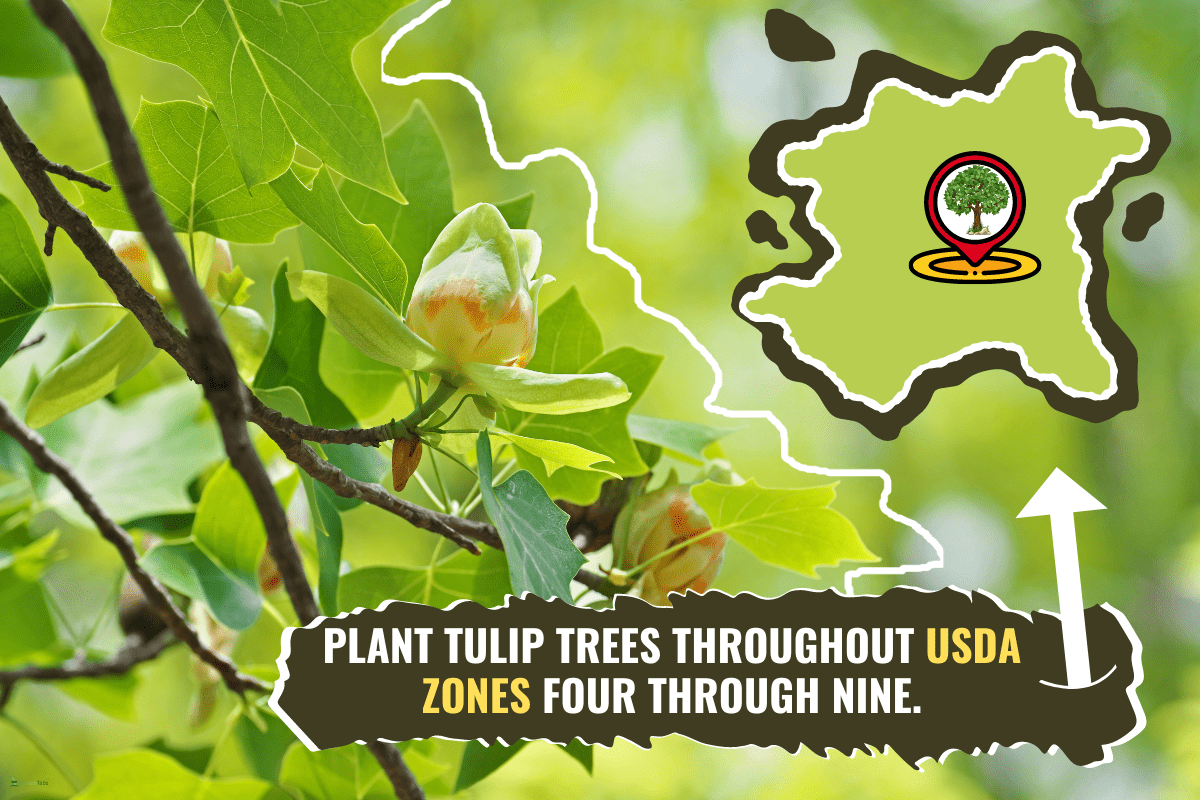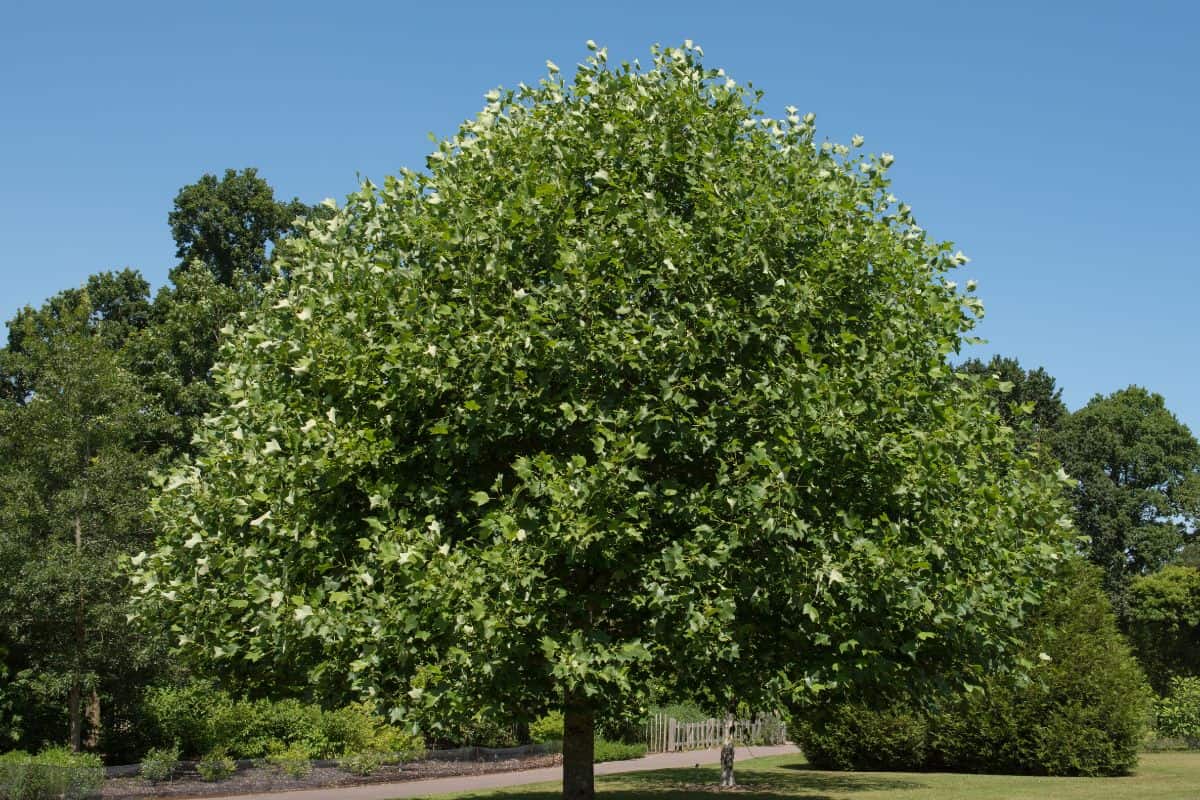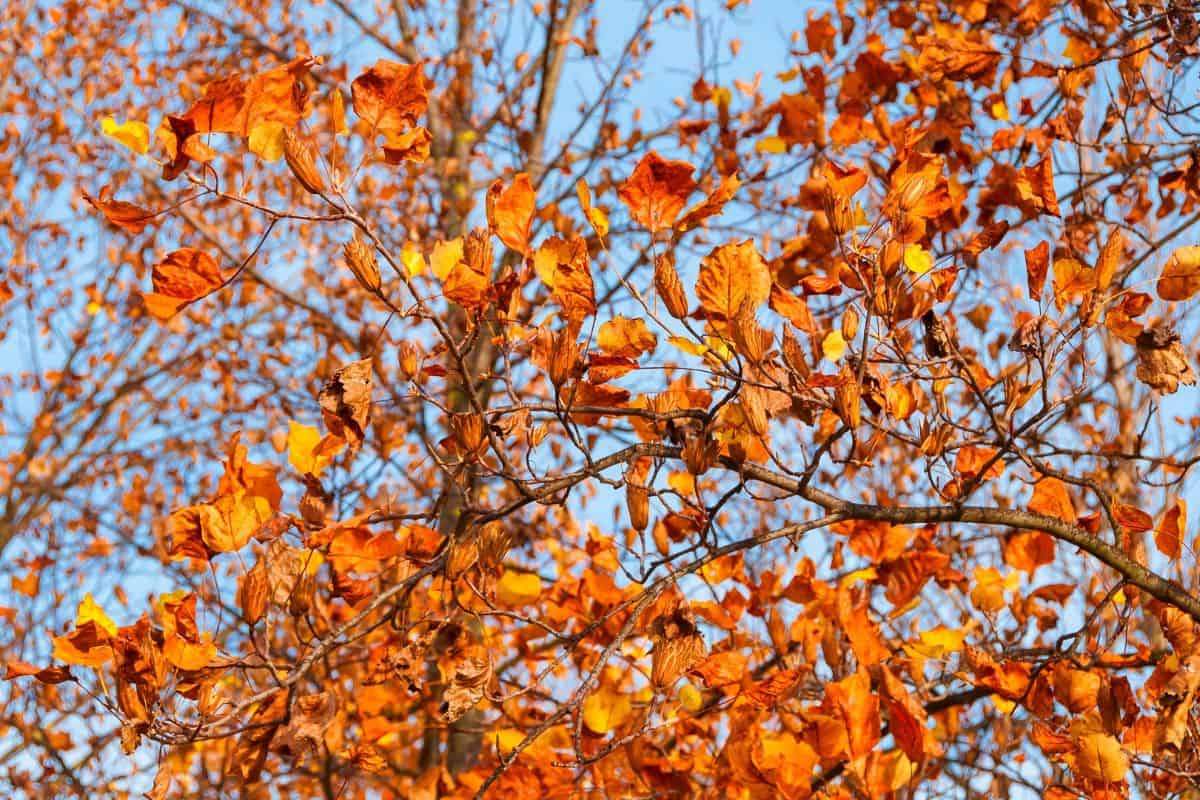Figuring out whether you can grow a specific plant in your USDA zone can be confusing. For example, have you recently been considering a tulip tree for your landscape but don't know what zone it can thrive in? Are these beautiful trees cold hardy? What about their heat tolerance?
Well, we've done extensive research and have these answers below!
You can usually plant tulip trees throughout USDA zones four through nine. Since these trees can withstand weather down to nearly -30 degrees Fahrenheit, they're incredibly cold-tolerant and resistant.
Additionally, your tulip tree can also thrive in warmer growing zones, being good in weather up to 90 degrees. Therefore, you can grow these trees throughout most US regions without problems.
As we begin this article, we will cover all things growing tulip trees and discuss what growing zones you can plant them in. Whether you're new to tulip trees, have one in your yard, or need additional help with this species, we're here for you. With that said, let's dive right in!

What USDA Zones Can You Grow Tulip Trees In?

If you live between USDA zones four and nine, you can plant a tulip tree without a problem. Since this species is tolerant to warm and cold climates, it thrives in various growing zones throughout North America.
This popular shade and ornamental tree species can be found anywhere from Montana, Wyoming, Northern New York, New Hampshire, and Maine to zone nine (California, Southern Texas, Louisiana, and Florida).
Therefore, you will notice these gorgeous trees throughout the United States, as they can grow just about everywhere. Even though this is quite an impressive growing zone threshold, there are still situations where a tulip tree won't be good for planting.
One interesting thing about these trees is they prefer moderate weather. That goes for both ends of the spectrum: hot and cold maximums/minimums.
You also want to ensure your tulip tree gets plenty of sun, wherever it is, as this is essential for its overall health and growth. The more sun, the better!
How Cold Can A Tulip Tree Get?
One of the more interesting facts about tulip trees is their resilience to freezing weather. Typically, you can expect a tulip tree to be hardy down to negative 30 degrees, which is unheard of for many plants.
That said, your tulip tree will likely be dormant during weather of this severity. It's common for trees in zone 4-6 to go into dormancy throughout winter because of how low the temperatures get.
Again, this won't be a problem for your tree, as it will return to life in the spring. Of course, if the weather were to drop even lower than -30 degrees Fahrenheit, this won't likely kill a tulip tree: it may stun it.
You can expect your plant to endure a few unusually cold spells. However, you don't want to plant your tulip tree somewhere it regularly drops below negative 30 degrees.
Even as a hardier species, your tulip tree can't withstand temperatures below its threshold.
How Hot Can A Tulip Tree Get?
You can typically expect a tulip tree to be okay in weather up to 90 degrees Fahrenheit. Since this species can be somewhat heat-sensitive, you don't want to try and grow it in the high desert or somewhere with triple-digit summers.
Generally, a tulip tree is good up to zone nine, meaning it thrives between daily temperatures of 70-90 degrees on average. Of course, if you have warm summers followed by cooler winters, that's perfectly fine for tulip trees.
Remember, they can also handle extreme cold, so this tree works in places with four distinct seasons. On top of that, your tulip tree may respond better to various types of weather throughout the year.
Especially in warmer climates, a tulip tree may become heat stressed if the weather remains hot for too long. That can cause it to get sick and even become dehydrated.
Experts warn that if it gets too hot for a tulip tree and it doesn't rain for weeks at a time, you'll need to water your plant to keep it from getting sick/dehydrated.
Where Is The Best Place To Plant A Tulip Tree?

Tulip trees will grow best in locations with full sun and well-drained soil. Since this species has incredibly shallow roots, planting a tulip tree somewhere with moisture is a must.
Although very cold and hardy, tulip trees don't always respond as well to extreme heat. Considering zone nine in the United States can get pretty warm during hotter periods, you may need to water your tree more frequently to prevent it from becoming sick.
A major concern with tulip trees in the summer is drought. For example, if you're in Southern California with this tree species and it doesn't rain for a month, you need to water your tree more often.
Especially if there's a drought, we recommend 2-3 times per month, or even weekly, if the air is incredibly dry paired with hot direct sun exposure.
On top of that, you don't usually want to plant anything else near a tulip tree. That's because their shallow roots often become aggressive in looking for ground moisture, leading to issues with other nearby root systems.
Of course, your tulip tree will be okay in 70-90 degree summers with appropriate watering, so don't panic if the weather calls for those higher temperatures.
What Type Of Soil Do Tulip Trees Need?
You usually want to give tulip trees rich, moist soil that drains well. Specifically, your tree will benefit from acidic, loamy, moist, sandy, well-drained, and clay soils.
As we said above, tulip trees don't respond well to drought. Therefore, you want to keep your tree somewhere with good ground moisture throughout the summer months, whether in partial shade, near a body of water, or located close to a sprinkler.
One of the tricky parts of growing tulip trees is their ground conditions. If the ground becomes too competitive or dry for tulip trees, the chances of them getting sick and dying increase.
We recommend giving your tree room to sprawl and planting it somewhere the ground won't become scorched in the summertime.
Investing in an irrigation system may also be worth it, so there are a few ways to keep your tree healthy.
However, drought won't affect your tulip tree as severely if you live somewhere humid. In that case, we don't see the need for installing a sprinkler or adjusting your watering schedule too much.
Can I Grow My Tulip Tree In Partial Shade?

Yes, a tulip tree can survive in partial shade as long as the climate allows for it. Specifically, a bit of shade can be beneficial if your tree is in partial shade in hotter regions (like zone nine during the summer).
On top of that, added shade can mean moister soil for your plant. Generally, when the ground is in partial shade, it holds water longer than soil exposed to the full sun.
One drawback to total sun exposure is that water absorbs into the ground or evaporates faster. That can be problematic for various reasons, especially since this species isn't drought-friendly.
So, if you live towards USDA zone nine and want to try planting a tulip tree in partial shade, we don't see an issue with that. Just remember, not too much!
How Often Should You Water A Tulip Tree?
On average, a tulip tree requires five to seven gallons of water per week. This can prove especially true during the summer and early fall when your tree needs water the most.
A good general rule for tulip trees is to make sure the top three inches of their soil are moist. If you test the ground around your tree and find it dry, you'll want to give it some extra water.
As we covered, your tree has shallow roots, meaning it won't hold much water for long. As soon as it rains or you grab the hose, your tree will depend on that immediate moisture.
Furthermore, some gardeners try and irrigate their tulip trees weekly or 3-4 times each month. Water can make or break the health and growth of shallow-rooted plants, so make sure to give tulip trees all the water they need.
Apine Soil Moisture Meter
This soil moisture reading meter is easy to read, has a 6.89-inch probe, promises accurate readings, shouldn't damage shallow roots, works inside out outdoors, and doesn't require batteries.
Follow this link to view it on Amazon.
Are Tulip Trees Easy To Grow?

In general, you can expect growing tulip trees to be easy. As long as you plant them between zones four and nine, your tulip tree shouldn't have issues growing or staying healthy.
Of course, the soil and climate conditions can also impact this. Therefore, you need to ensure your tulip tree has well-draining, nutrient-rich ground as well as full/partial sun exposure.
The more sun and ground nutrients a tulip tree gets, the better it will grow. You also want to factor in the hotter summer months (if you have them), so keep that in mind when choosing a spot for your tree.
To Finish It Up
Whether you currently have a tulip tree in your garden or want to grow one, it's always good to know what USDA zones it can be in. Luckily, we found this tree grows throughout zones 4-9, making it a perfect tree for most United States regions.
Whether you're in chilly Montana or sunny California, you should be able to grow a tulip tree successfully. Again, the sun and soil also need to be good for your tree to thrive and moisture levels!
While we have your attention, check out these related garden articles:
What Is A Tulip Tree? [Inc. Examples and Care Tips]
Exotic Emperor Tulip Plant Guide [Care Tips, Pictures, and More]

